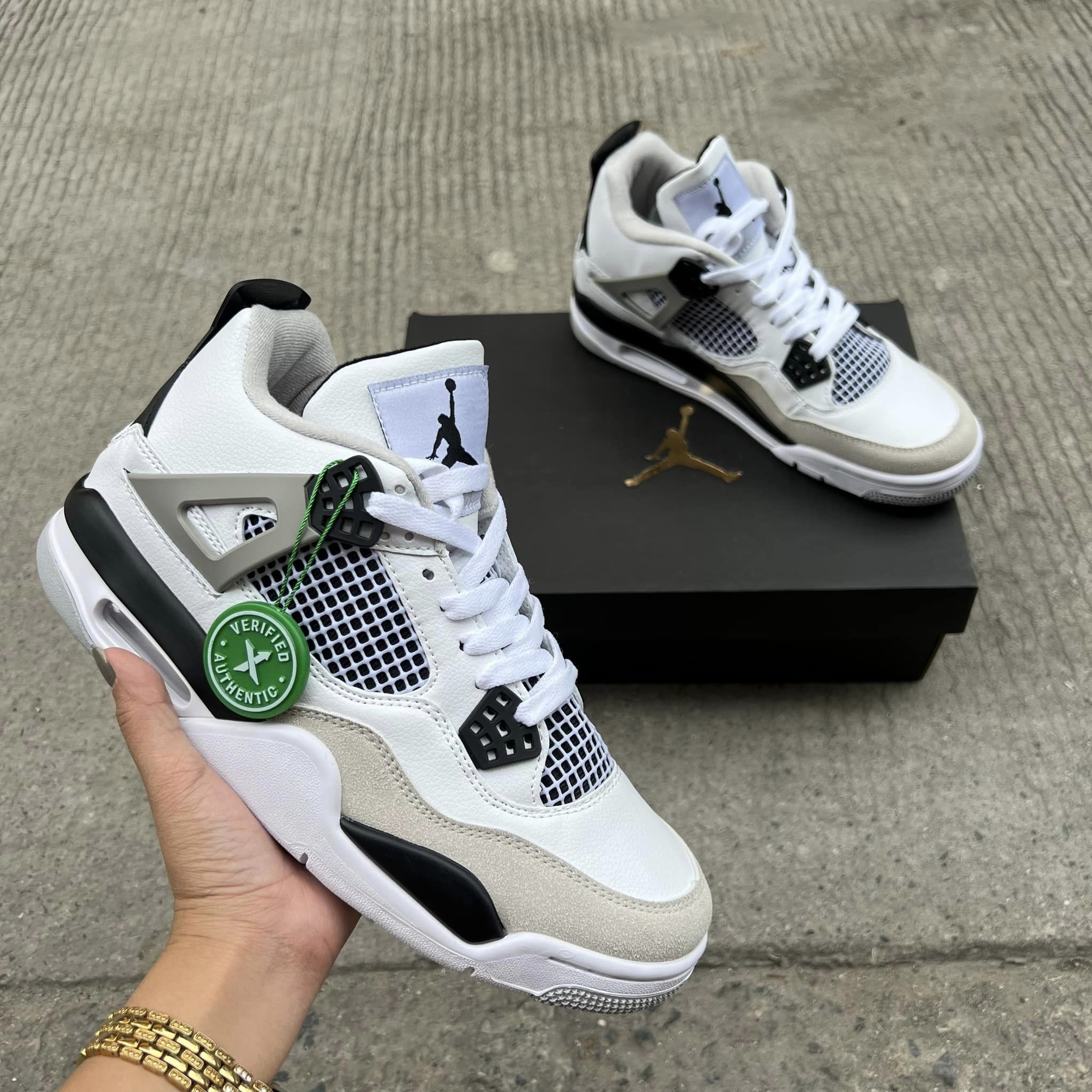Air Jordans: the name alone conjures images of greatness, innovation, and an enduring legacy that stretches far beyond the basketball court.
Over the years, these iconic sneakers have ignited a culture, revolutionized sports fashion, and become a staple in both athletic performance and streetwear style. We could wax poetic about their storied history, the unparalleled blend of technical brilliance and aesthetic beauty, or the countless moments in pop culture they’ve shaped—from Frank Ocean rocking Royal 1s at Paris Fashion Week to the unmistakable fresh-out-of-the-box scent that sneakerheads cherish.
Yet, like any great collection—whether it’s blockbuster movie franchises, the novels of Philip Roth, or the eclectic outfits of Tyler, the Creator—Air Jordans encompass a spectrum of hits, misses, and peculiarities. This rich variety makes them ripe for a ranking that is as subjective as it is authoritative.
Table of Contents
1. Air Jordan III
The sneaker that catapulted the Air Jordan line from a notable signature series to an undeniable pop cultural phenomenon. The Air Jordan III is where everything that defines the legacy truly comes together. Debuting in 1988, the III marks the first collaboration with the legendary designer Tinker Hatfield. Hatfield’s vision introduced the exposed Air bubble, a groundbreaking feature that revolutionized sneaker technology. He also dreamt up the self-lacing shoes seen in “Back to the Future Part II” and designed many of the most iconic sneakers in history.
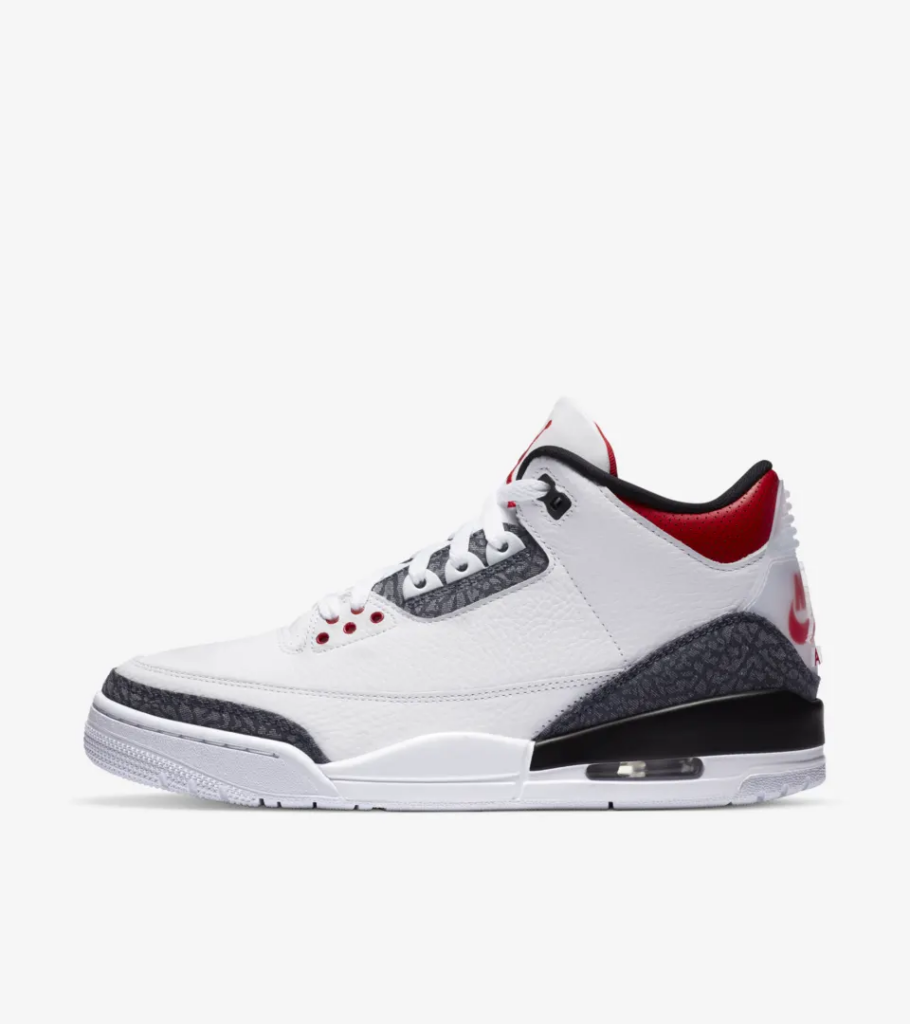
The III was also the first Jordan to feature the now-iconic Jumpman logo, a symbol that has become synonymous with excellence and aspiration. The design of the Jordan III strikes an extraordinary balance—it feels retro, futuristic, and timeless all at once. The original colorways brought us the elephant print, a pattern that has since become a staple in the sneaker world.
But it wasn’t just the design and technology that set the III apart. The marketing campaign, featuring the unforgettable Mars Blackmon commercials with Spike Lee, turned Michael Jordan into the most marketable athlete of his time. These ads captured the imagination of fans and solidified the Jordan III’s place in pop culture.

And let’s not forget the personal touch: the Jordan III is reportedly MJ’s favorite sneaker, adding an extra layer of allure and authenticity. With its perfect blend of innovative design, cultural impact, and personal significance, the Air Jordan III stands as a true icon in the world of sneakers. This is the shoe that set the standard and forever changed the game. —Yang-Yi Goh
2 Air Jordan I

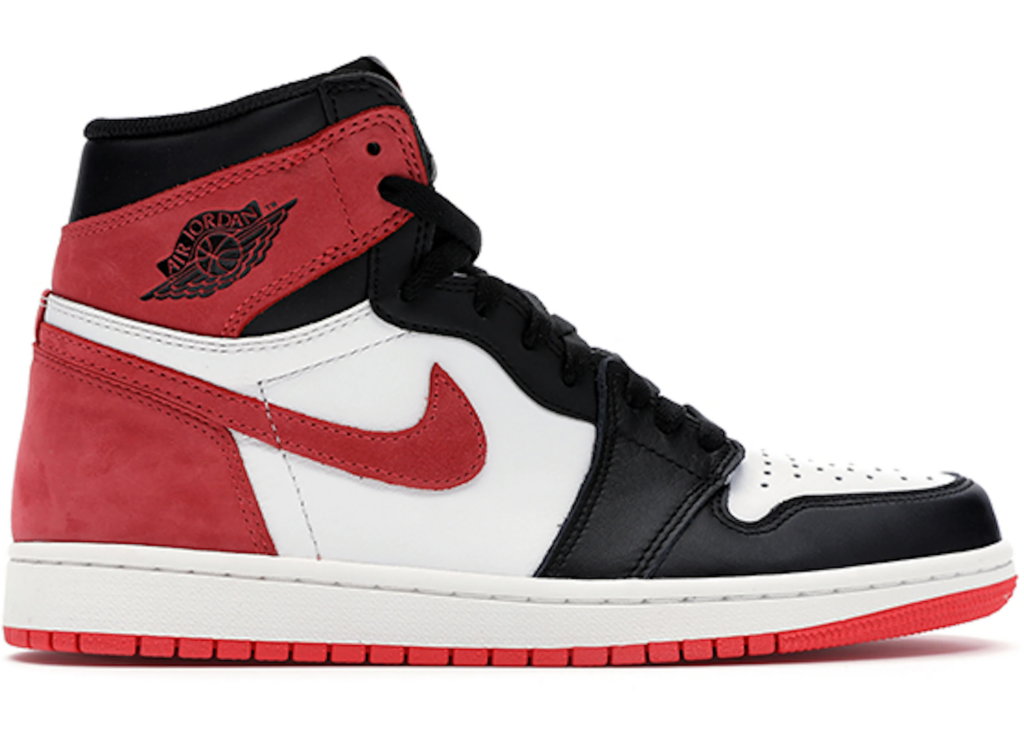
The Jordan I, designed by Peter Moore, broke all the rules with its bold design and daring colorways. The most famous among them, the “Bred” (Black and Red), was even banned by the NBA, which only fueled its mystique and desirability. Michael Jordan defied the league’s regulations, wearing the sneakers anyway and accepting the fines—a rebellious act that cemented the shoe’s legendary status.
The Jordan I is more than just a sneaker; it’s a symbol of innovation and individuality. Its high-top design and Nike Air cushioning provided unparalleled support and comfort on the court, while its striking color combinations made a statement off it. The sneaker featured the iconic Wings logo and the first-ever appearance of the Nike Swoosh on a Jordan shoe, elements that have become hallmarks of the brand.
The cultural impact of the Jordan I extends far beyond basketball. It laid the foundation for the sneakerhead community and established a blueprint for future releases. It’s a shoe that has been embraced by skaters, musicians, and fashion enthusiasts alike, each finding their own unique way to incorporate it into their style.
3. Air Jordan XI
Designed by the legendary Tinker Hatfield, the Jordan XI is famous for its sleek silhouette and use of patent leather—an unprecedented choice at the time that brought a touch of formal elegance to athletic footwear. The shiny, glossy finish wasn’t just for looks; it provided durability and support, ensuring that the XI was as functional as it was stylish.
The Jordan XI made its on-court debut during Michael Jordan’s triumphant return to the NBA, culminating in the Chicago Bulls’ historic 72-10 season and an NBA championship. The XI was also the shoe Jordan wore in the iconic “Space Jam” movie, further embedding it into pop culture.
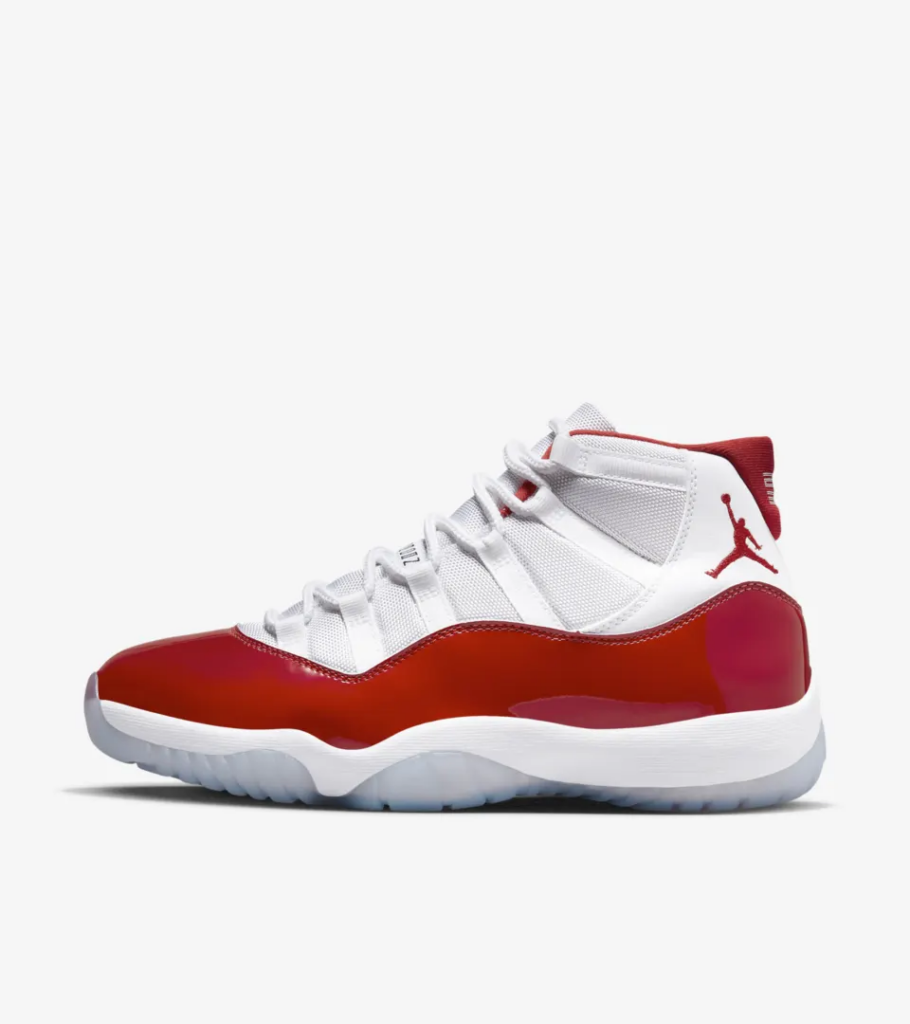
The design features of the XI are nothing short of revolutionary. The patent leather, ballistic nylon mesh, carbon fiber spring plate, and translucent rubber outsole all combined to create a sneaker that was not only aesthetically stunning but also performance-driven. The high-cut collar and responsive cushioning provided the support and comfort necessary for elite athletic performance.
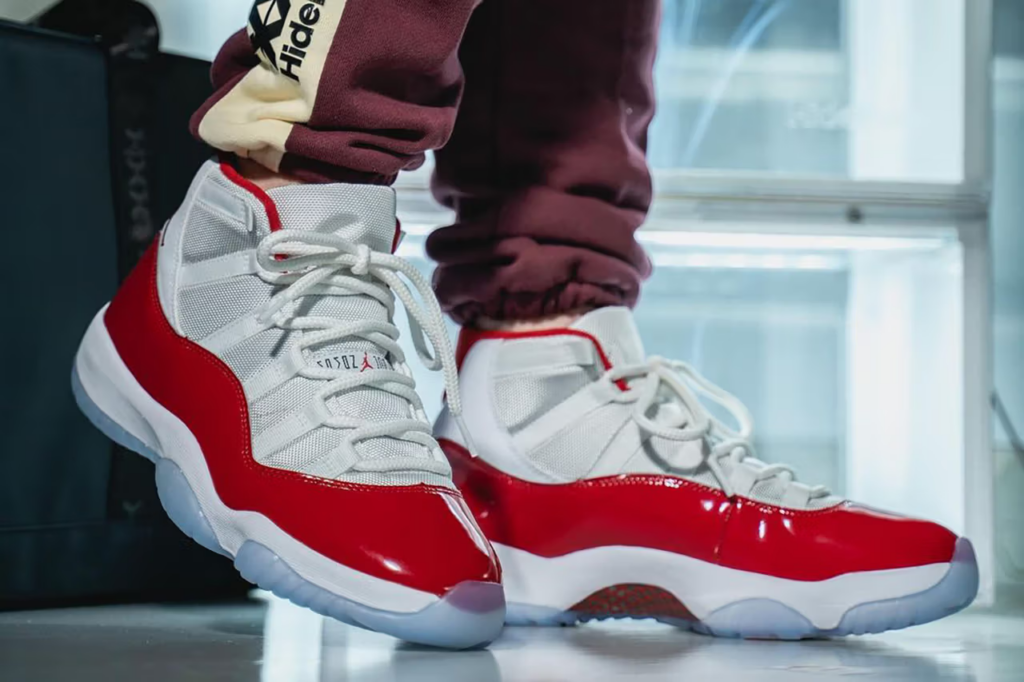
The cultural impact of the Air Jordan XI is undeniable. The “Concord” colorway, with its stark white and black palette, became an instant classic, while the “Bred” version is revered for its boldness and heritage. Every release, whether original or retro, sparks a frenzy among sneaker enthusiasts, making the XI one of the most sought-after models in the Jordan lineup.
4. Air Jordan IV
The Air Jordan IV was another stroke of genius from Tinker Hatfield, the visionary designer behind some of the most iconic Jordans. With the IV, Hatfield introduced design elements that were both functional and stylish, making the shoe an instant classic. The mesh panels and plastic lace wings not only provided better breathability and support but also gave the IV a distinctive look that set it apart from its predecessors.
One of the most memorable features of the Jordan IV is the visible Air cushioning in the sole, which had first appeared on the III but was perfected in the IV. This not only enhanced the sneaker’s performance on the court but also gave it a futuristic aesthetic that captured the imagination of fans and athletes alike.
The Jordan IV’s cultural impact was cemented when it was prominently featured in Spike Lee’s film “Do the Right Thing,” forever linking the sneaker to hip-hop culture and urban fashion. The shoe’s appearance in the movie helped it transcend basketball, making it a symbol of style and cultural expression.
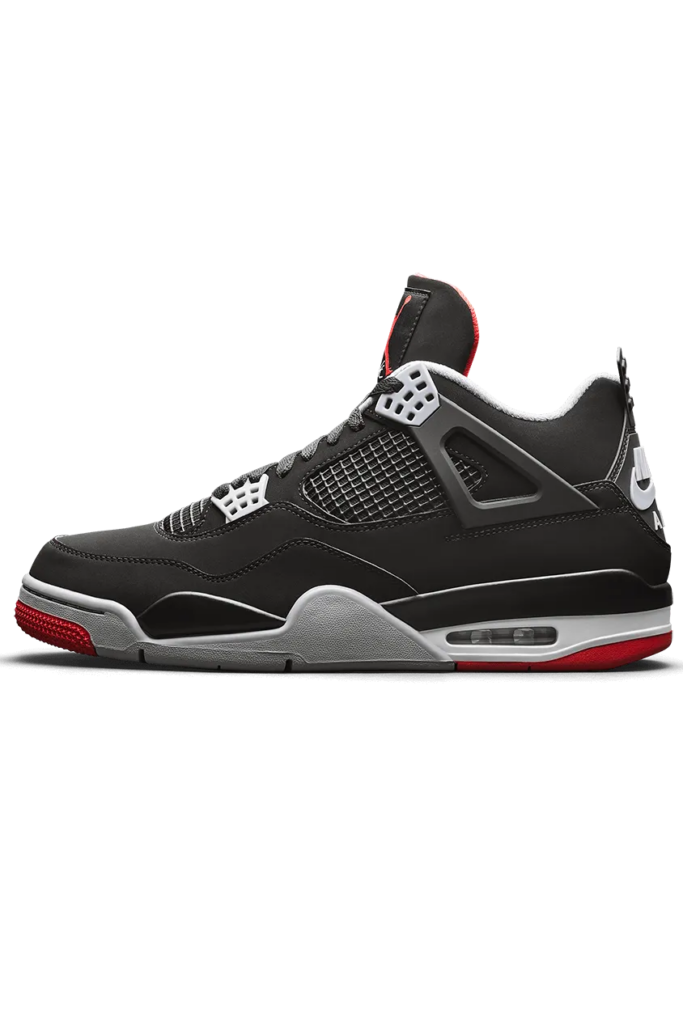
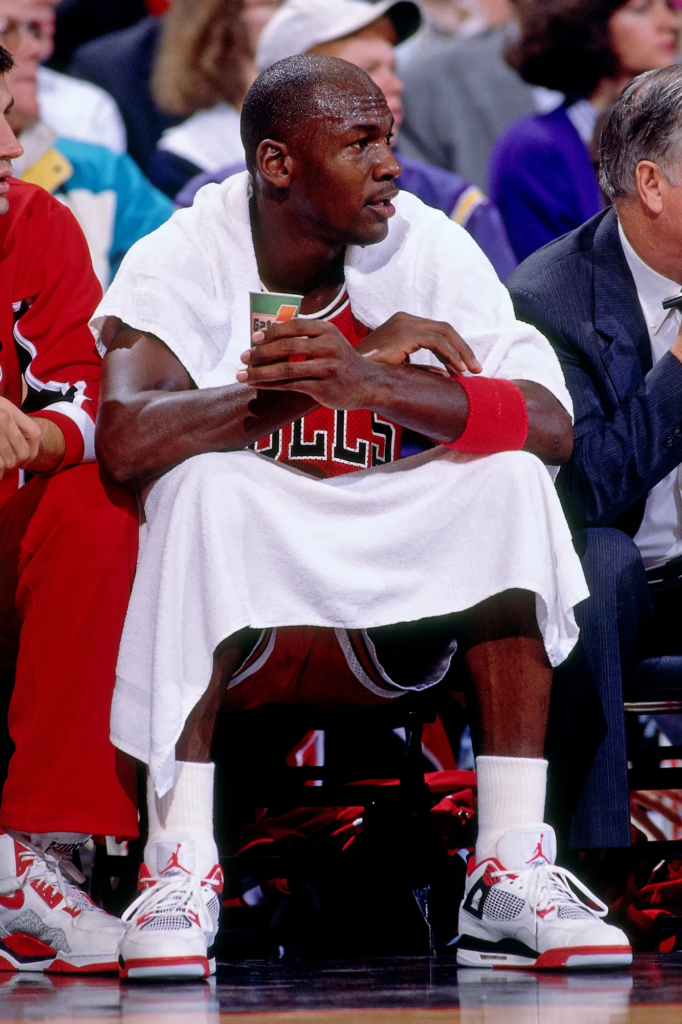
The original colorways, including the “Black/Cement” and “White/Cement,” have become legendary, each release eagerly anticipated and quickly sold out. The design’s versatility and timeless appeal have made the IV a favorite for both retro collectors and modern sneakerheads.
On the court, the Jordan IV was worn during some of Michael Jordan’s most iconic moments, including “The Shot” against the Cleveland Cavaliers in the 1989 NBA Playoffs, a moment that is still celebrated by basketball fans today. This association with greatness has only added to the IV’s legendary status.
5. Air Jordan VI
Designed by the legendary Tinker Hatfield, the Jordan VI features a unique silhouette with clean lines and dynamic overlays. Its design was inspired by MJ’s German sports car, showcasing speed and sleekness with its aerodynamic shape and visible Air cushioning. The VI introduced a reinforced toe cap and a molded heel tab, which provided extra support and ease of entry—elements that were both functional and aesthetically pleasing.
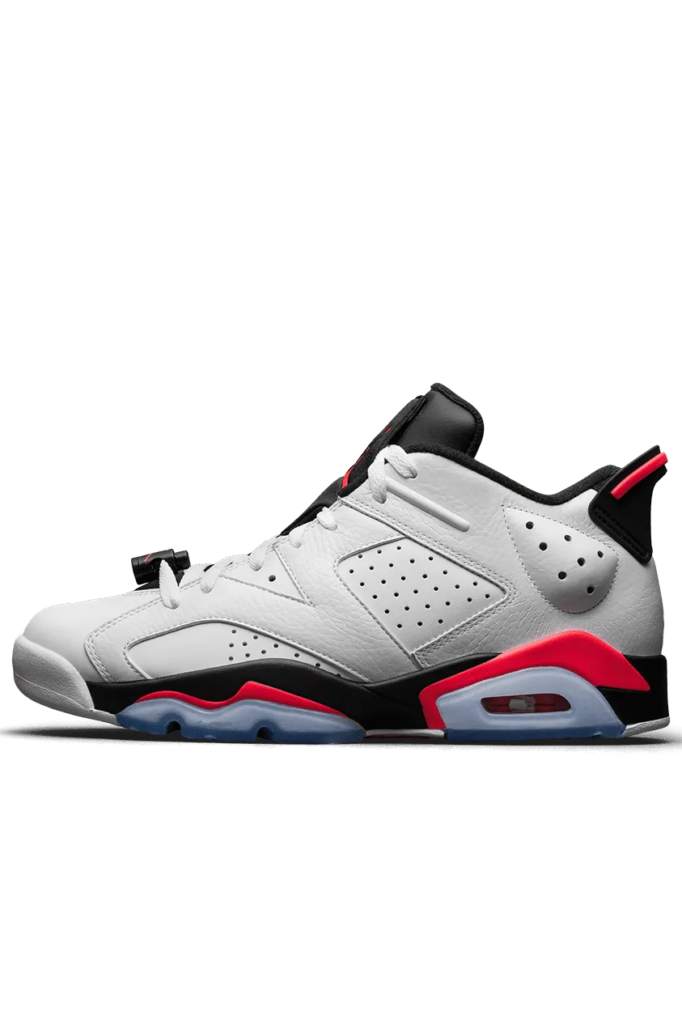
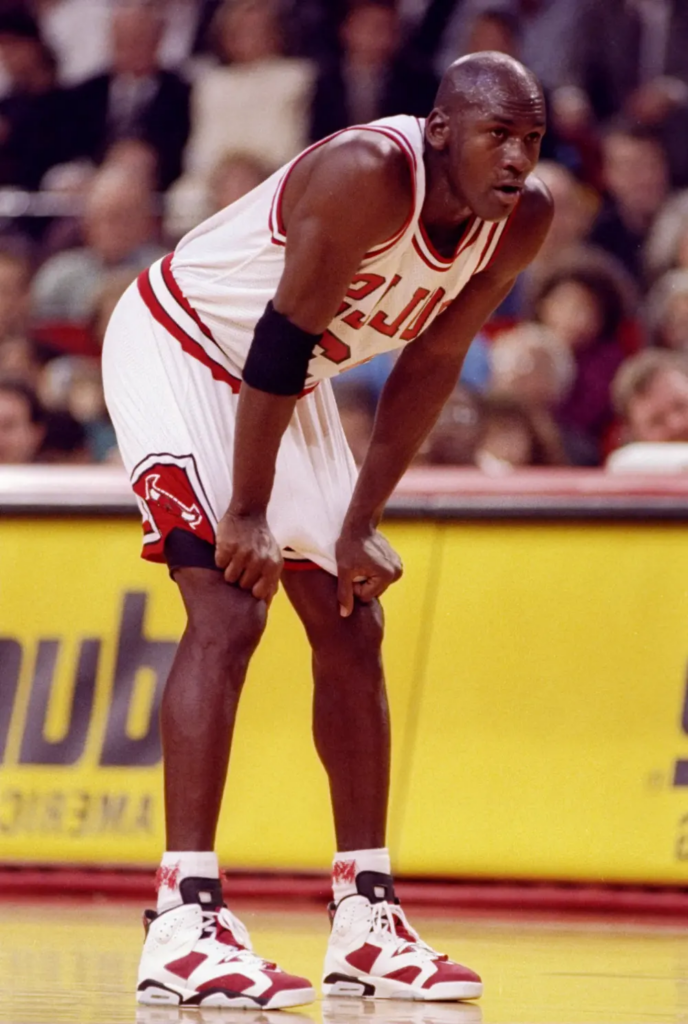
One of the most distinctive features of the Jordan VI is the translucent rubber outsole, which not only offered superior traction but also added a futuristic touch to the sneaker’s look. The perforated panels and inner bootie construction ensured breathability and a snug fit, making the VI a perfect blend of form and function.
The Jordan VI’s cultural impact is monumental. Michael Jordan wore the “Infrared” colorway during his first NBA Finals appearance, leading the Chicago Bulls to their first championship. This moment etched the VI into the annals of basketball history, symbolizing triumph and excellence. The shoe’s association with this victory has made it a favorite among collectors and fans.
Beyond the court, the VI has found its place in music videos, movies, and street fashion, becoming a symbol of 90s culture and beyond. Its various retro releases continue to spark excitement, with each new colorway and collaboration drawing significant attention and admiration.
6. Air Jordan XII
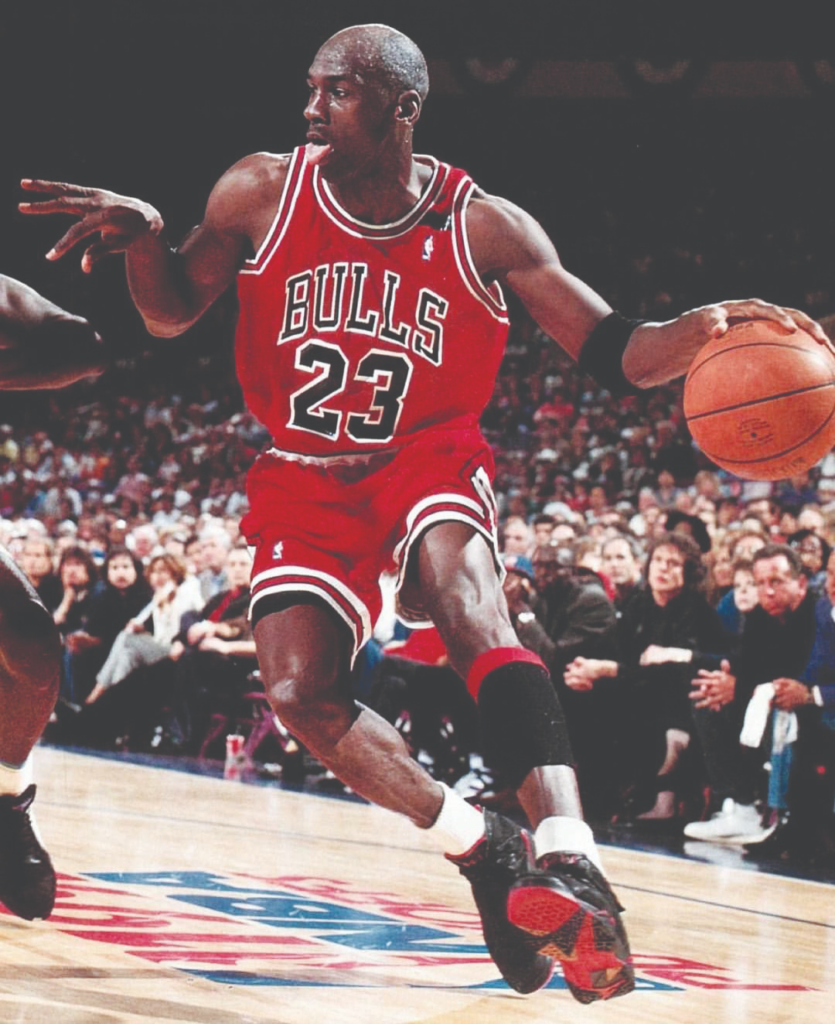
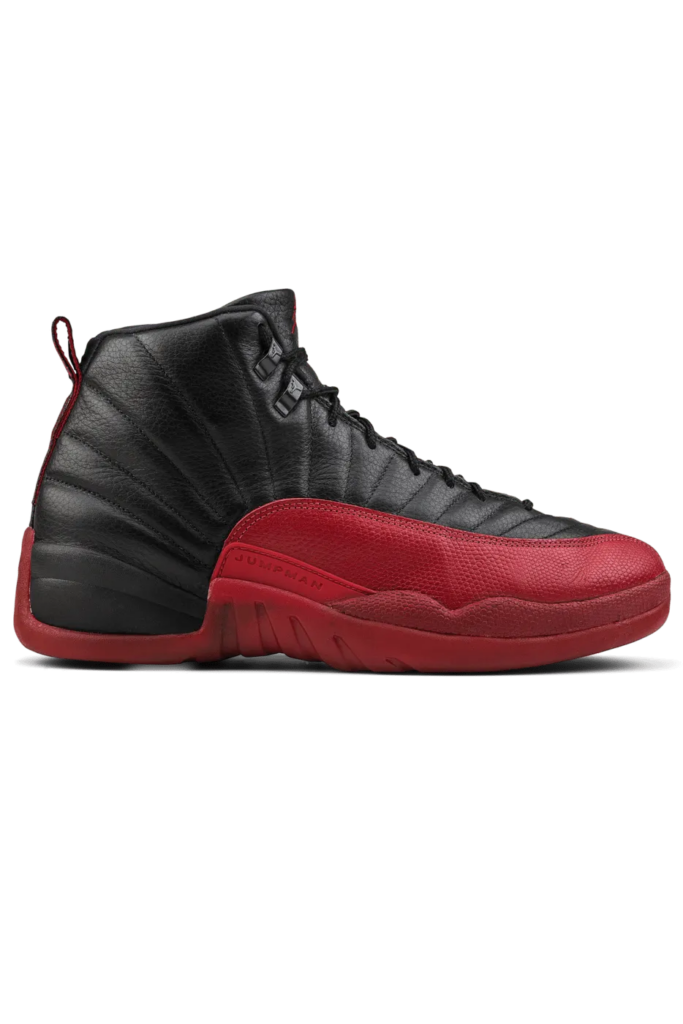
Designed by the renowned Tinker Hatfield, the Jordan XII drew inspiration from the Japanese Rising Sun flag and a 19th-century women’s dress boot. This combination resulted in a design that was both striking and functional. The XII was the first Air Jordan to feature Zoom Air cushioning, providing unparalleled responsiveness and comfort on the court. The full-length Zoom Air unit, combined with a carbon fiber shank plate, offered players enhanced stability and support.
One of the standout features of the Air Jordan XII is its premium materials. The upper was constructed from high-quality leather, adding durability and a touch of luxury. The unique stitching pattern on the upper not only enhanced the shoe’s aesthetic appeal but also reinforced its structure, ensuring it could withstand the rigors of intense play.
The Jordan XII is perhaps best known for its role in Michael Jordan’s legendary “Flu Game” during the 1997 NBA Finals. Battling illness, Jordan delivered a heroic performance while wearing the black and red colorway, scoring 38 points and leading the Bulls to a crucial victory. This moment immortalized the XII in basketball folklore, making it a symbol of determination and greatness.
Culturally, the Air Jordan XII has left a lasting impact. Its sleek design and premium feel have made it a favorite among sneakerheads and fashion enthusiasts alike. The shoe has been re-released in numerous colorways, each one met with eager anticipation and quick sell-outs, proving the XII’s enduring appeal.
7. Air Jordan V

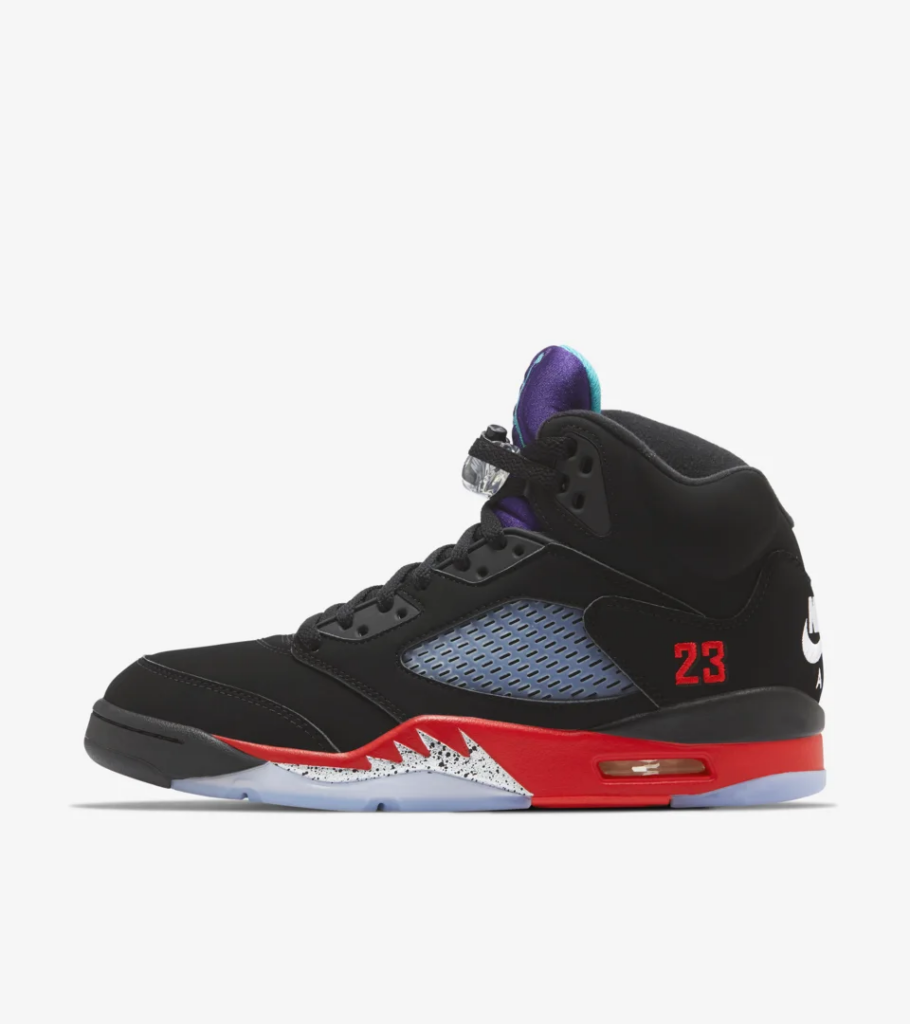
Designed by the legendary Tinker Hatfield, the Jordan V drew inspiration from World War II fighter planes, evident in the shark-tooth design on the midsole. This bold aesthetic choice, combined with a sleek, aerodynamic silhouette, made the V stand out both on and off the court. The shoe introduced a reflective 3M tongue, a first in the Jordan line, adding a striking visual element that also served a practical purpose by enhancing visibility during nighttime play.
The Air Jordan V was also the first to feature clear rubber outsoles, which provided superior traction and added a futuristic touch. The inclusion of lace locks allowed for a customizable fit, ensuring that the shoe was not only stylish but also highly functional for basketball players.
Michael Jordan’s performances in the Jordan V only added to its legendary status. Wearing the “Grape” and “Fire Red” colorways, MJ delivered some of his most memorable moments, including a career-high 69 points against the Cleveland Cavaliers. These performances helped solidify the V’s place in the pantheon of great basketball sneakers.
Culturally, the Jordan V has transcended the sport, becoming a staple in music videos, movies, and street fashion. The “Grape” colorway, in particular, became iconic when worn by Will Smith in “The Fresh Prince of Bel-Air,” cementing the shoe’s place in pop culture. The various retro releases and collaborations continue to generate immense hype, making the V a perennial favorite among sneaker enthusiasts.
8. Air Jordan II

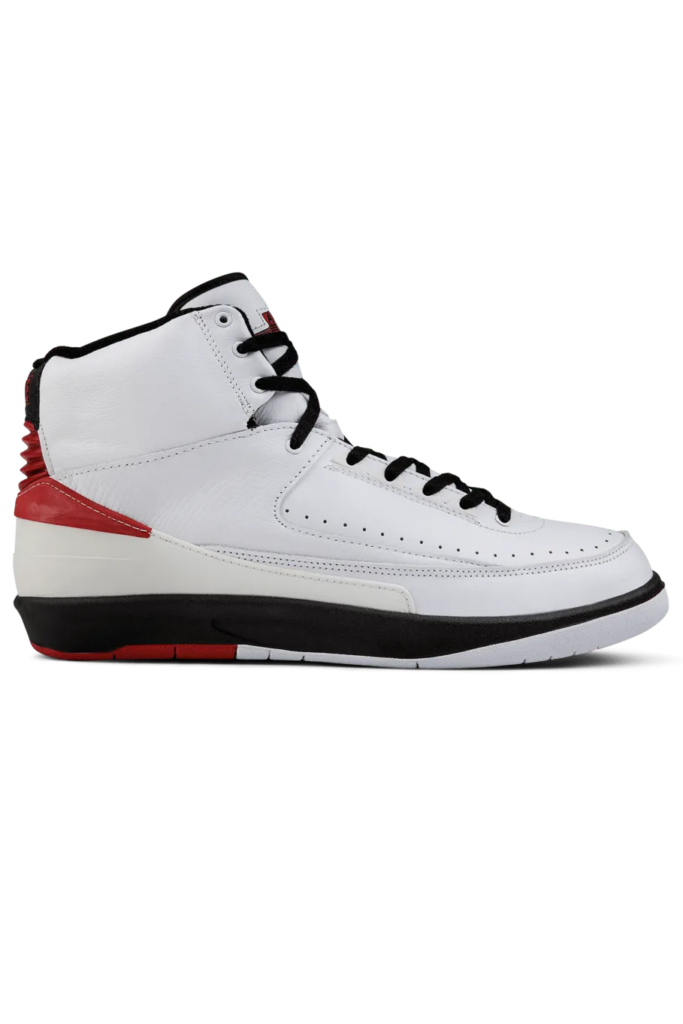
Designed by Bruce Kilgore, the Jordan II was a departure from the design of the original Jordan I. Crafted in Italy, the II emphasized premium materials and high-end craftsmanship, featuring a full-grain leather upper and faux lizard skin accents. This focus on luxury was unprecedented in basketball sneakers, signaling that the Air Jordan brand was as much about style as it was about sports.
The Air Jordan II also introduced significant performance enhancements. The shoe incorporated a polyurethane midsole and a full-length Air-Sole unit, providing exceptional cushioning and support. The absence of the Nike Swoosh on the sides was a bold move, allowing the design to focus on the elegant lines and high-quality materials that defined the shoe.
Michael Jordan’s prowess on the court while wearing the II further cemented its legacy. Despite battling injuries during the 1986-1987 season, MJ averaged 37.1 points per game, showcasing the shoe’s performance capabilities. His dominance helped elevate the Jordan II to iconic status.
9. Air Jordan VII
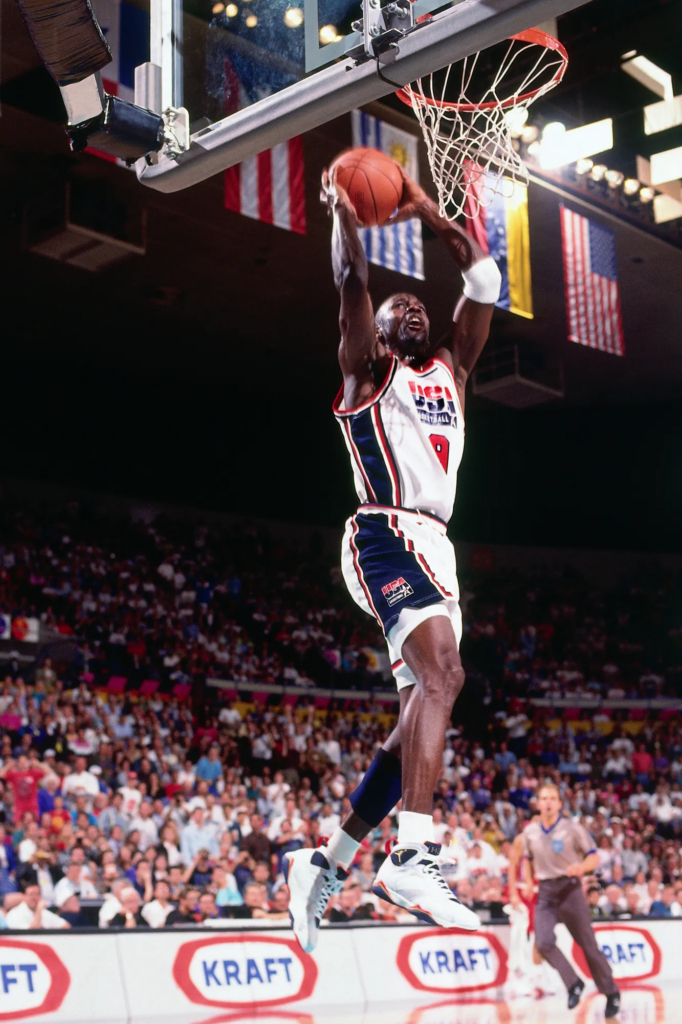

Designed by the visionary Tinker Hatfield, the Air Jordan VII took inspiration from West African tribal art, resulting in a sneaker that was both vibrant and distinctive. The VII featured geometric patterns and bright, contrasting colors, breaking away from the more subdued tones of its predecessors. This bold aesthetic choice made the VII an instant standout.
The Jordan VII was also a technological leap forward. It introduced a neoprene inner bootie, which provided a snug, sock-like fit and enhanced comfort. The shoe also did away with the visible Air unit and exterior Nike branding, allowing the Jumpman logo to take center stage. The Huarache-inspired design improved both fit and performance, making it a favorite among players.
Michael Jordan’s performance in the VII was nothing short of legendary. Wearing the “Olympic” colorway, MJ led the Dream Team to gold at the 1992 Barcelona Olympics, solidifying the VII’s place in history. He also wore the VII during the Chicago Bulls’ second consecutive NBA Championship, further embedding the sneaker into the annals of basketball greatness.
Culturally, the Air Jordan VII made a significant impact. The shoe’s bold design and association with the Dream Team helped it transcend basketball, influencing fashion and street culture. The VII has been celebrated in various retros and special editions, each release met with enthusiastic anticipation from sneaker enthusiasts.
10. Air Jordan XIV
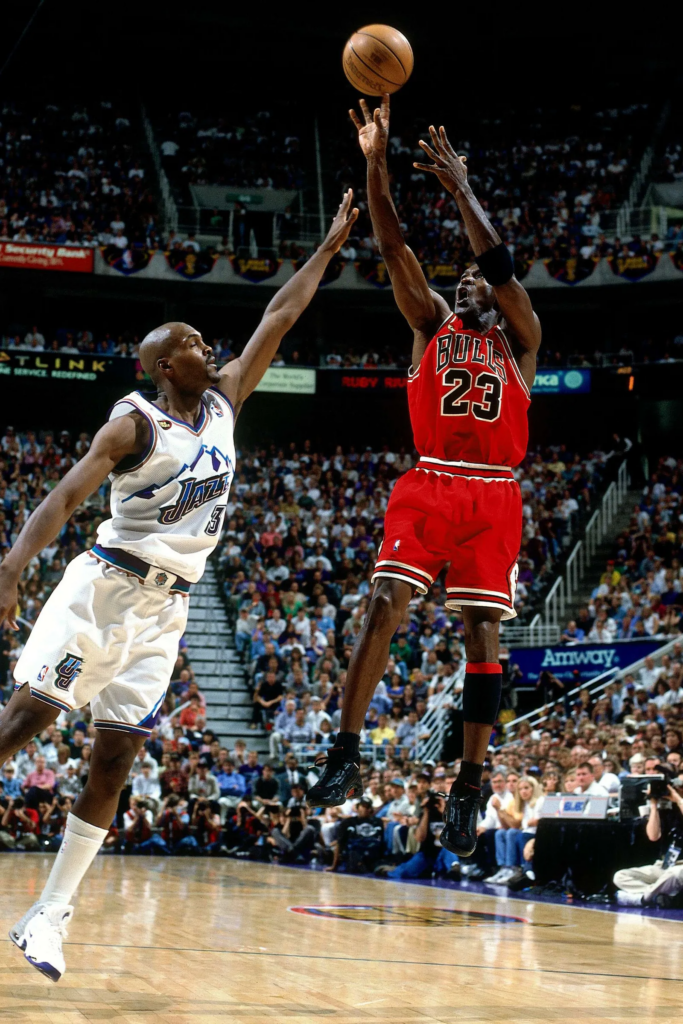
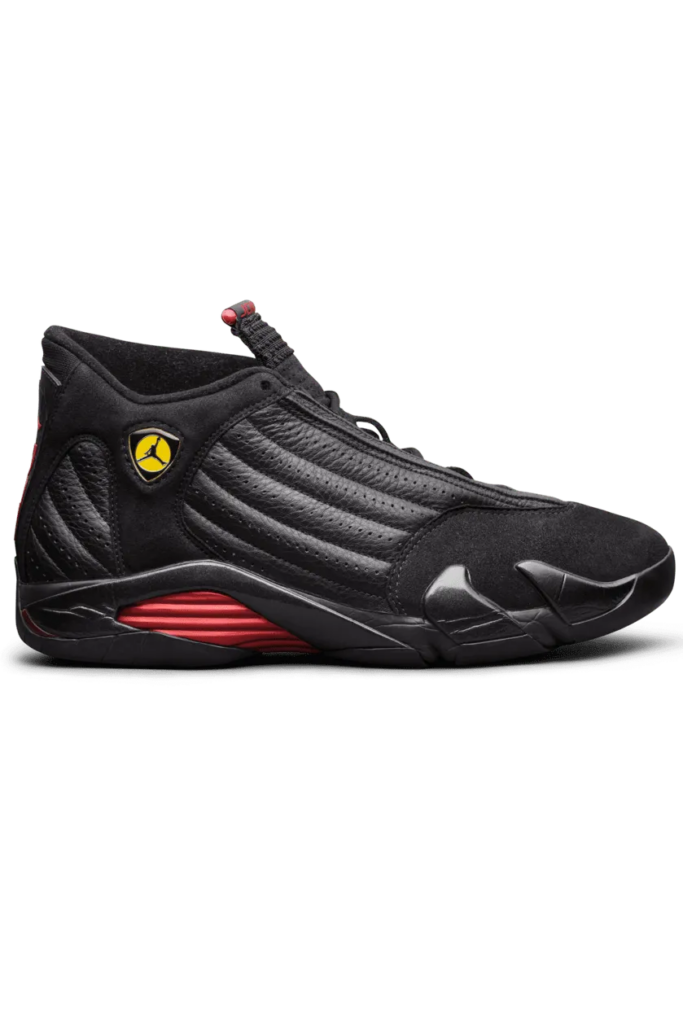
Designed by Tinker Hatfield and Mark Smith, the Air Jordan XIV drew heavy inspiration from Jordan’s love for luxury sports cars, particularly his Ferrari 550 Maranello. The sleek lines, the Ferrari-like Jumpman shield logo, and the aerodynamic silhouette all echo the elegance and speed of a high-end vehicle. This design not only made the XIV look fast but also feel fast, merging aesthetics with functionality.
The XIV featured a host of performance innovations. Dual Zoom Air units provided responsive cushioning, while the low-profile design allowed for exceptional agility on the court. The breathable mesh vents and strategic use of leather and suede materials ensured both comfort and durability. The XIV’s lacing system and unique heel counter offered a secure fit, making it a top performer during intense play.
The Air Jordan XIV is forever linked to one of the most iconic moments in sports history: Michael Jordan’s “Last Shot” in Game 6 of the 1998 NBA Finals. Wearing the black and red colorway, MJ sank the game-winning basket against the Utah Jazz, securing his sixth championship and cementing his legacy. This moment immortalized the XIV as a symbol of triumph and clutch performance.
Culturally, the Jordan XIV has made a lasting impact. Its Ferrari-inspired design elements and connection to Jordan’s final Bulls championship have made it a favorite among collectors and fans. The shoe has seen numerous retros and special editions, each greeted with eager anticipation and appreciation.
11. Air Jordan XIII
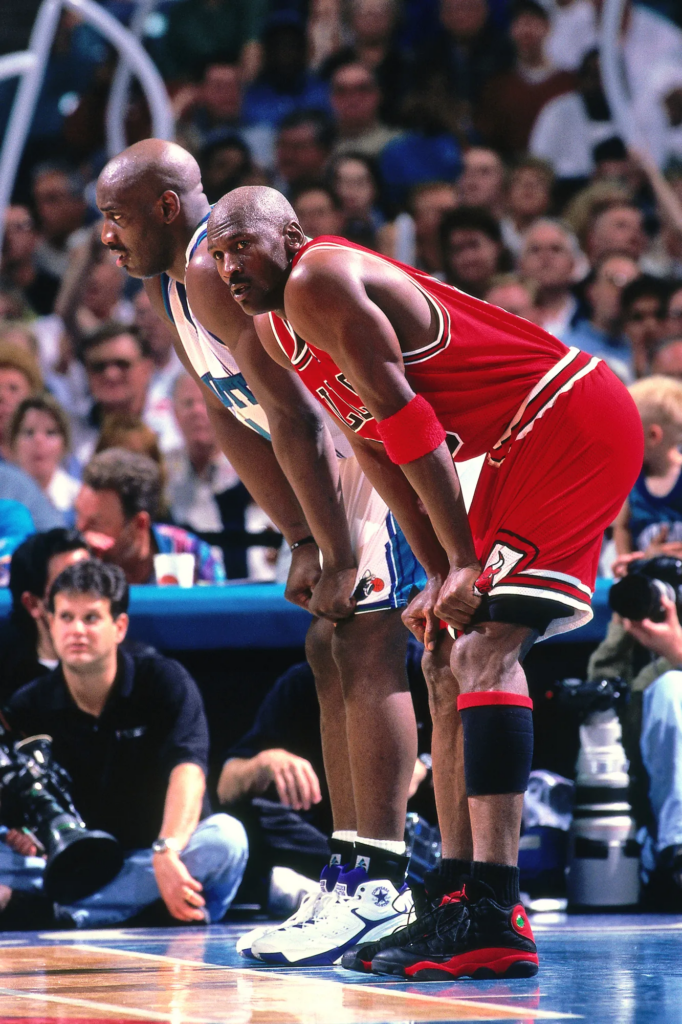
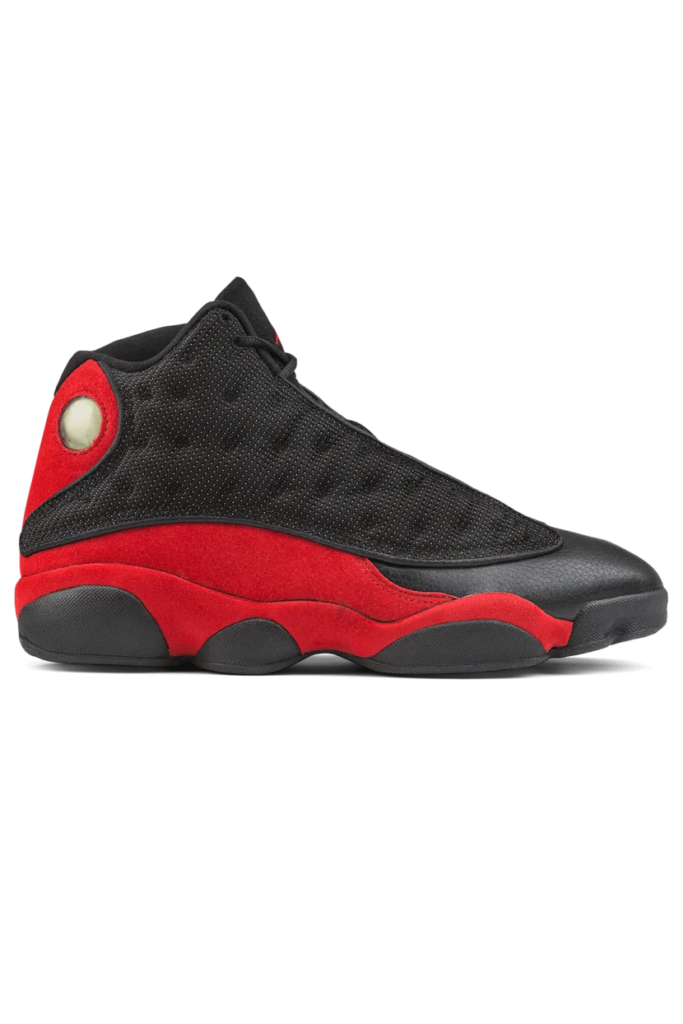
Designed by the iconic Tinker Hatfield, the Air Jordan XIII drew inspiration from the sleek and stealthy nature of a panther, earning it the nickname “Black Cat.” This influence is evident in the shoe’s design elements, such as the holographic “cat’s eye” on the heel and the paw-like outsole, which provides excellent traction and agility. The XIII’s sleek lines and unique dimpled upper give it a distinctive look that has stood the test of time.
The Air Jordan XIII was packed with performance innovations. The use of a carbon fiber shank plate offered enhanced stability, while the Zoom Air units in the forefoot and heel provided responsive cushioning. The suede-wrapped midsole and premium leather and mesh upper ensured durability and comfort, making the XIII a top performer on the court.
Michael Jordan wore the XIII during the 1997-1998 NBA season, leading the Chicago Bulls to their sixth championship and cementing his legacy as one of the greatest athletes of all time. The XIII was on MJ’s feet for many memorable moments, including his last regular-season game at Madison Square Garden as a Bull, where he dropped 44 points in the “He Got Game” colorway.
Culturally, the Air Jordan XIII has made a significant impact. The shoe gained additional fame from its appearance in the Spike Lee film “He Got Game,” where Denzel Washington’s character sported the iconic sneaker. This appearance further embedded the XIII into popular culture, making it a favorite among sneakerheads and basketball fans alike.
12. Air Jordan XVI
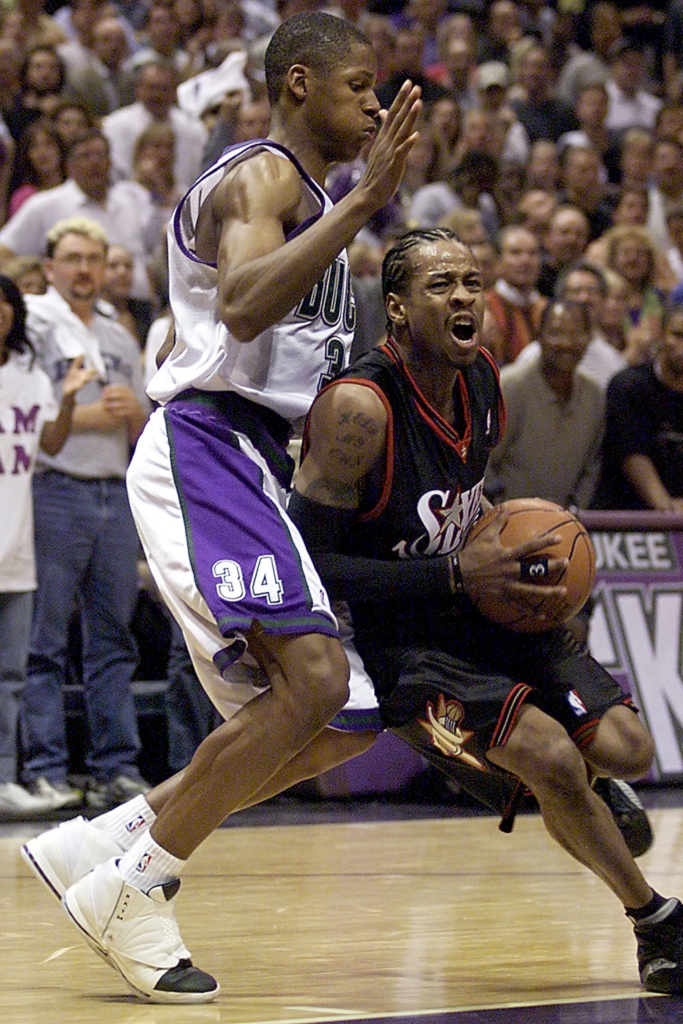
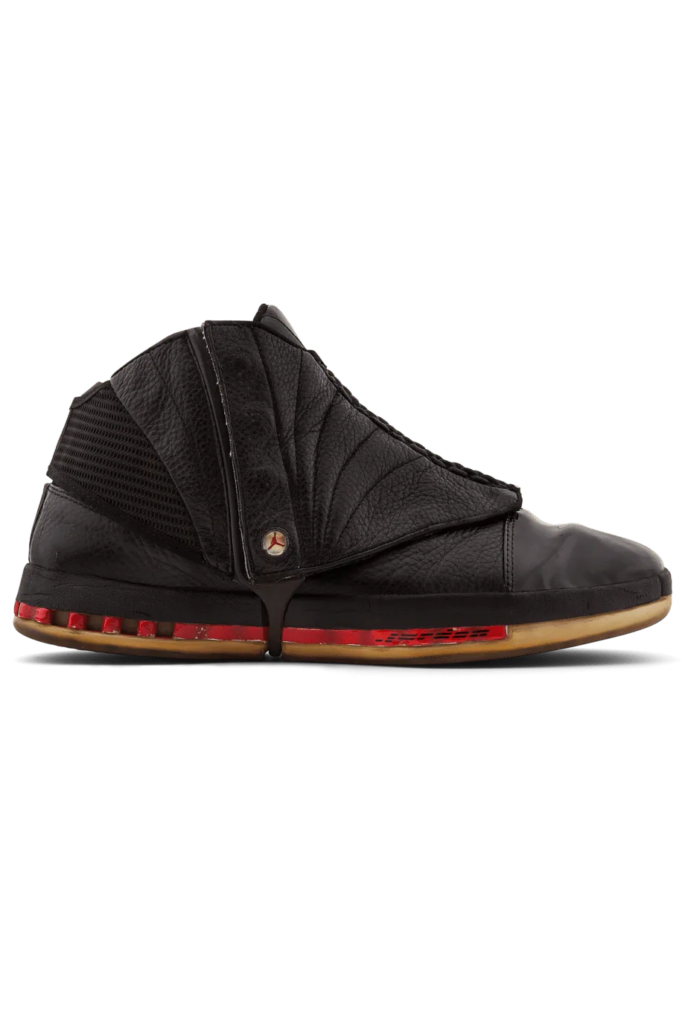
Designed by Wilson Smith, the Air Jordan XVI marked a significant departure from its predecessors, introducing a detachable shroud that provided a dynamic new look and added functionality. This shroud could be removed for a more traditional sneaker appearance or kept on for a sleek, futuristic vibe, offering versatility that appealed to both athletes and fashion enthusiasts.
The design of the Jordan XVI drew inspiration from the juxtaposition of business and basketball, reflecting Michael Jordan’s transition from player to executive. The shoe featured a premium leather upper, a nod to high-end dress shoes, while maintaining the performance capabilities expected of an Air Jordan. The patent leather toe cap added a touch of sophistication and durability, ensuring the shoe could perform on the court while looking sharp off it.
Performance-wise, the Air Jordan XVI did not disappoint. It incorporated a full-length Air-Sole unit for cushioning and a lightweight Phylon midsole for comfort and responsiveness. The clear rubber outsole provided excellent traction, while the addition of blow-molded heel and forefoot Zoom Air units offered enhanced support and impact protection.
13. Air Jordan VIII
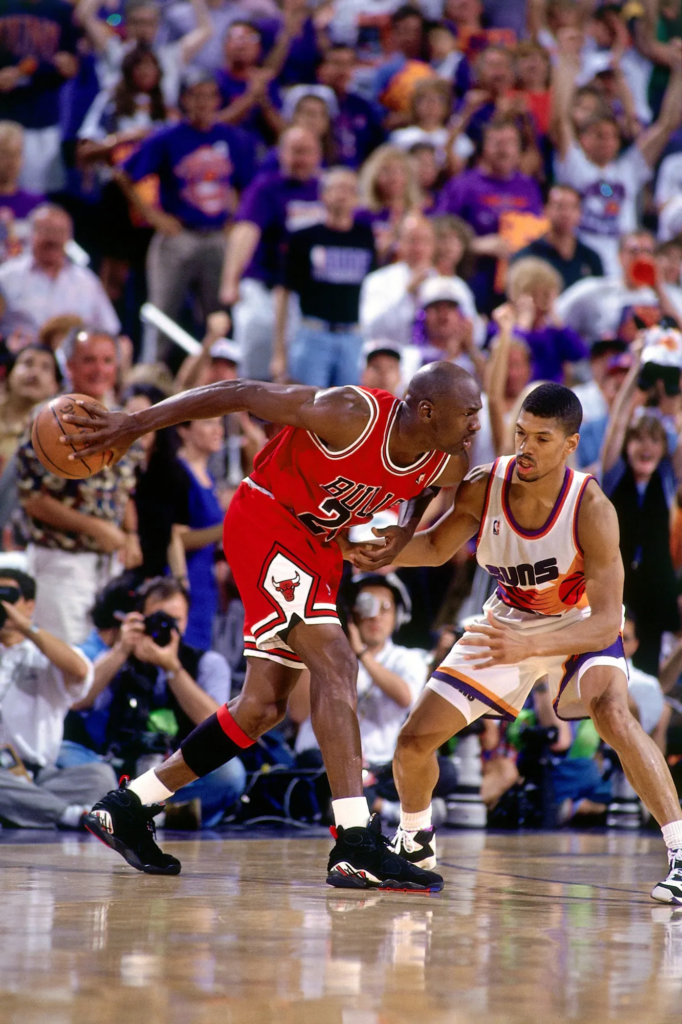
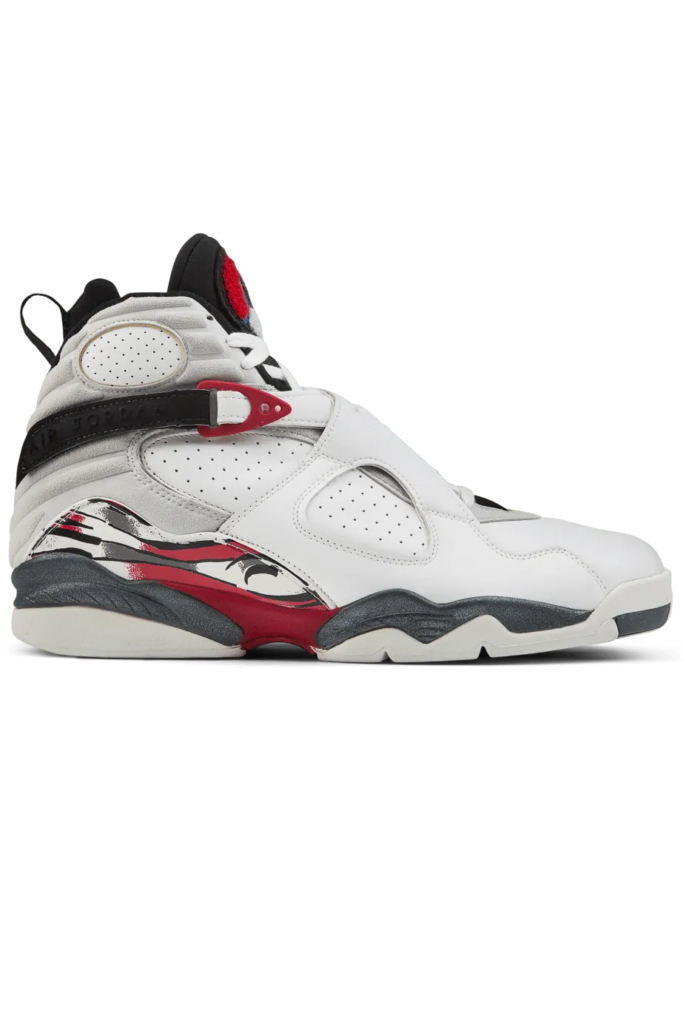
Designed by Tinker Hatfield, the Air Jordan VIII was a departure from previous models with its unique, aggressive design. The VIII featured a distinctive crisscrossing strap system over the laces, providing additional lockdown and support—a functionality that also gave the shoe its nickname, the “Strap.” This bold design choice ensured a secure fit and added a visual flair that set the VIII apart.
The shoe’s upper combined leather, Durabuck, and mesh materials, offering both durability and breathability. The padded collar and thick inner sockliner provided enhanced comfort, while the addition of a polyurethane midsole and full-length Air-Sole unit delivered exceptional cushioning and impact protection. The sculpted midsole and outsole pattern were inspired by Jordan’s dynamic playing style, ensuring the VIII could handle the rigors of intense play.
The Air Jordan VIII is forever linked to Michael Jordan’s first three-peat with the Chicago Bulls. He wore the VIII during the 1992-1993 season and the playoffs, leading the Bulls to their third consecutive NBA championship. Notably, Jordan wore the “Playoff” colorway during the Finals, adding to the shoe’s legendary status.
Culturally, the Air Jordan VIII made a significant impact. Its bold design and association with one of the most dominant eras in basketball history made it a favorite among fans and collectors. The VIII’s various colorways, including the iconic “Aqua” and “Bugs Bunny” editions, have remained highly sought after, each release generating excitement and nostalgia.
14. Air Jordan XVIII

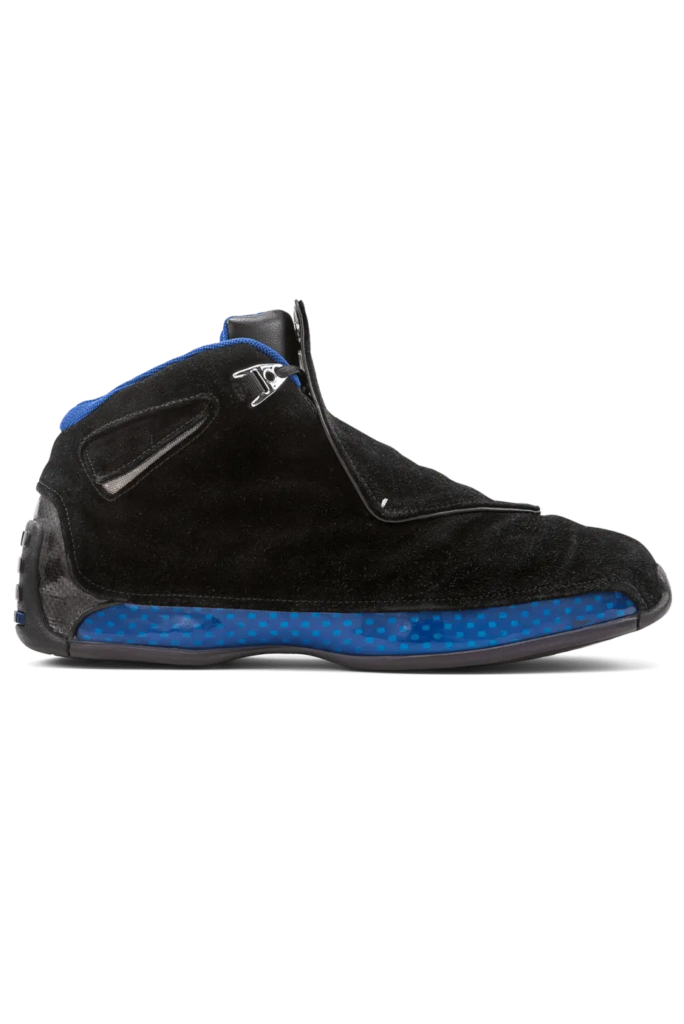
Designed by Tate Kuerbis, the Air Jordan XVIII drew inspiration from high-end automobiles and Italian dress shoes, reflecting Michael Jordan’s appreciation for fine craftsmanship and elegant style. The result was a shoe that exuded luxury while maintaining the high performance standards expected from the Air Jordan line.
The Jordan XVIII featured a one-piece leather upper with minimal stitching, giving it a streamlined and elegant appearance. The unique shroud cover, fastened by a magnetic strap, concealed the laces, adding to the shoe’s sleek, minimalist look. This design choice not only provided a clean aesthetic but also enhanced the shoe’s aerodynamic performance.
Underneath its stylish exterior, the Air Jordan XVIII was packed with cutting-edge technology. The shoe incorporated a full-length Zoom Air unit and a carbon fiber comfort plate, providing responsive cushioning and excellent support. The addition of dual-layer heel and forefoot cushioning ensured impact protection and comfort during intense play. The outsole, inspired by race car tires, offered superior traction and stability on the court.
The Air Jordan XVIII holds a special place in Jordan history, as it was the last model worn by Michael Jordan during his final season with the Washington Wizards. This connection adds a layer of poignancy and historical significance to the XVIII, marking the end of an era for one of basketball’s greatest players.
15. Air Jordan XV


Designed by the legendary Tinker Hatfield, the Air Jordan XV drew inspiration from the X-15 fighter jet, a symbol of speed and technological advancement. This influence is evident in the shoe’s sleek, aerodynamic lines and aggressive styling, making it one of the most distinctive silhouettes in the Air Jordan line.
The XV introduced several unique design elements. Its woven Kevlar upper provided strength and flexibility, while the hidden quick-lace system ensured a snug and secure fit. The most striking feature, however, was the protruding tongue, which extended higher than previous models and was meant to mimic Michael Jordan’s iconic tongue-out facial expression during games. This design choice was polarizing, but it underscored the shoe’s commitment to standing out from the crowd.
Performance-wise, the Air Jordan XV did not compromise. The shoe featured a full-length Zoom Air unit for responsive cushioning, a Phylon midsole for lightweight support, and a dynamic fit sleeve for a secure, sock-like feel. The combination of these elements ensured that the XV provided excellent performance on the court, even as its design pushed aesthetic boundaries.
Although Michael Jordan never wore the XV in an NBA game, having retired for the second time before its release, the shoe still carries significant cultural weight. Its avant-garde design and connection to Jordan’s legacy made it a subject of fascination and debate among sneaker enthusiasts. The XV’s bold aesthetic and innovative features have influenced subsequent designs and left a lasting impact on sneaker culture.
16. Air Jordan IX
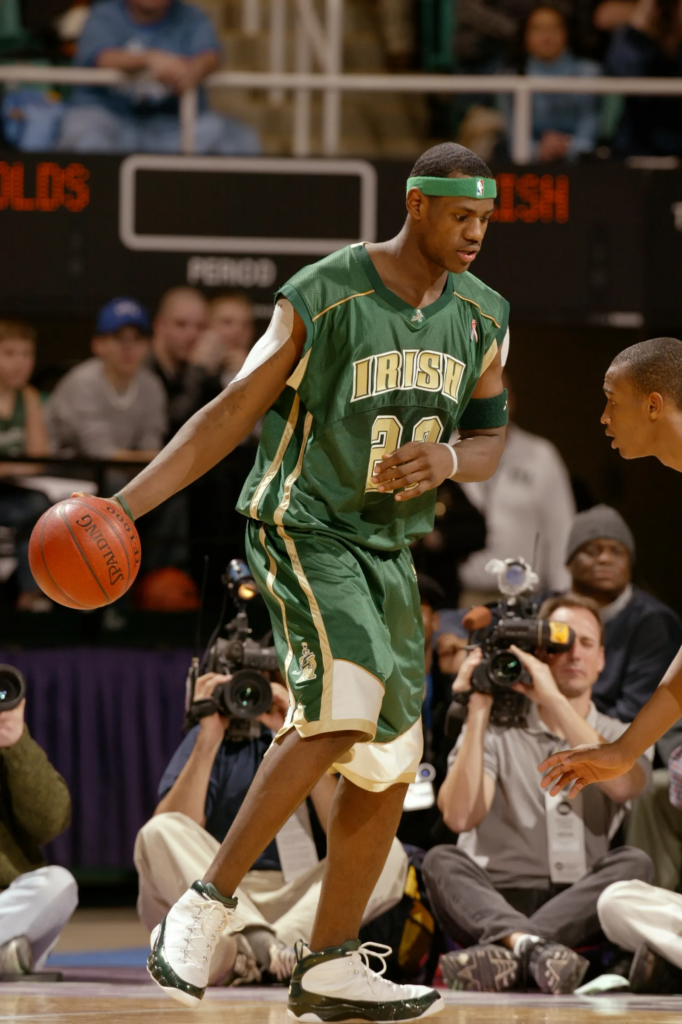
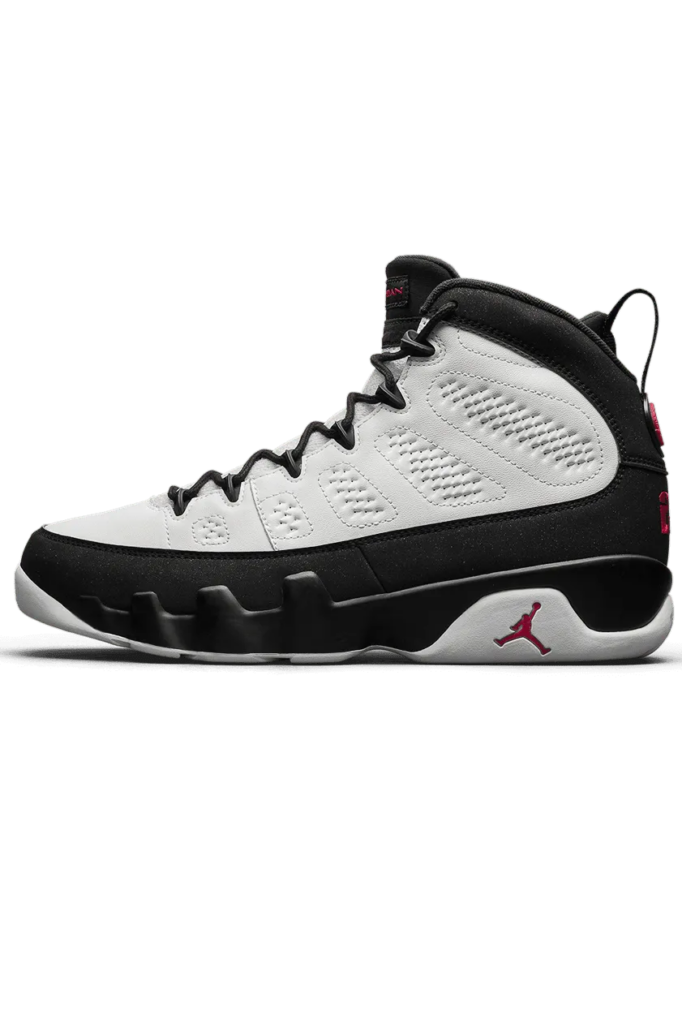
Designed by the legendary Tinker Hatfield, the Air Jordan IX was inspired by Michael Jordan’s brief retirement from basketball to pursue a career in baseball. This sneaker reflects MJ’s global influence, with elements that celebrate his impact beyond the NBA. The IX features a clean, streamlined design with a mix of leather and nubuck materials, providing durability and a premium look.
One of the standout features of the Air Jordan IX is its multilingual outsole, which displays various phrases in different languages, celebrating Jordan’s international influence. These phrases include words like “Dedicated” and “Intense,” capturing the essence of MJ’s work ethic and global appeal. The shoe also incorporates a dynamic-fit inner bootie and a one-pull lacing system, ensuring a snug and comfortable fit.
Performance-wise, the Jordan IX was built for versatility. The large-volume Air-Sole unit in the heel and forefoot provided excellent cushioning and impact protection, while the polyurethane midsole offered lightweight support. The unique outsole pattern, inspired by Japanese design, provided superior traction and stability on the court.
Even though Michael Jordan never wore the IX in an NBA game, the sneaker holds a special place in the Air Jordan legacy. It was the first model released after his initial retirement and is famously depicted on the statue outside the United Center in Chicago, symbolizing his enduring legacy. The IX also gained cultural prominence through its association with other sports and its appearances in popular culture.
17. Air Jordan XVII
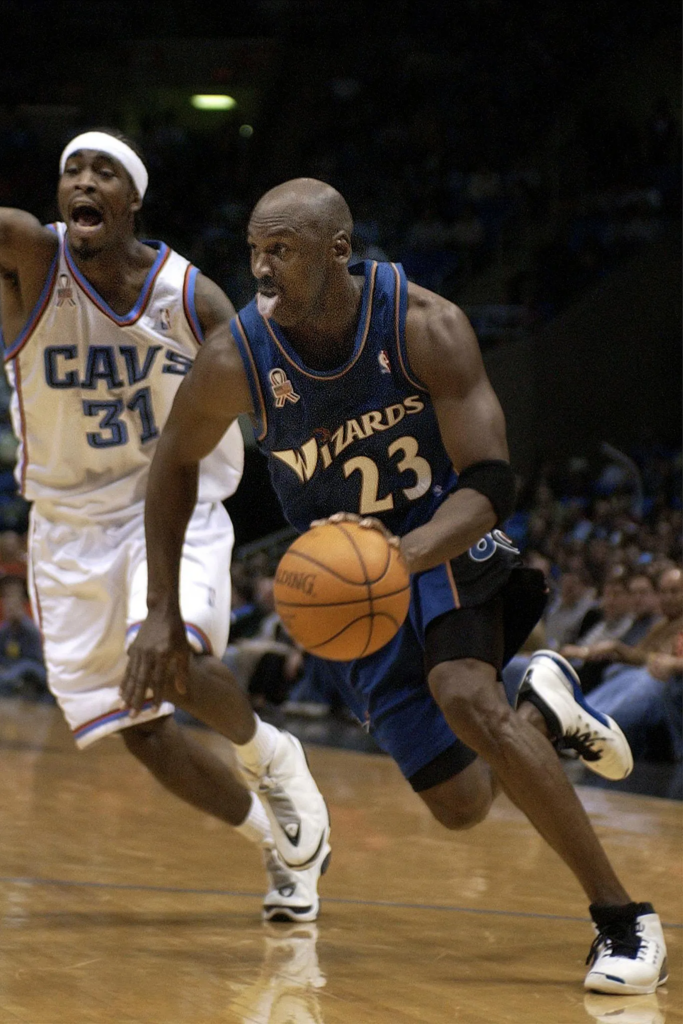

Designed by Wilson Smith, the Air Jordan XVII drew inspiration from jazz music and Aston Martin automobiles, combining a sense of rhythm and sleekness. The result was a sneaker that exuded sophistication while delivering top-tier performance. The XVII was unveiled with a unique metal briefcase and a CD-ROM, highlighting its premium positioning and innovative spirit.
The design of the Air Jordan XVII featured a full-length shank plate for enhanced stability, encapsulated Zoom Air cushioning for responsive comfort, and a dynamic fit sleeve for a secure, personalized fit. The upper was crafted from premium leather and featured a removable midfoot cover, adding a touch of versatility and style. This combination of materials and design elements ensured that the XVII was both a performance powerhouse and a fashion statement.
The Air Jordan XVII holds a special place in Jordan history, as it marked Michael Jordan’s return to the court with the Washington Wizards. This comeback added a layer of narrative significance to the XVII, symbolizing resilience and a passion for the game. Jordan’s performance in the XVII, though in the twilight of his career, still showcased moments of brilliance and competitiveness.
Culturally, the Air Jordan XVII made a significant impact. Its luxurious design and connection to Jordan’s return to basketball resonated with fans and collectors. The shoe’s various colorways, including the iconic “College Blue” and “Black/Chrome,” have been celebrated for their aesthetic appeal and attention to detail.
18. Air Jordan XIX
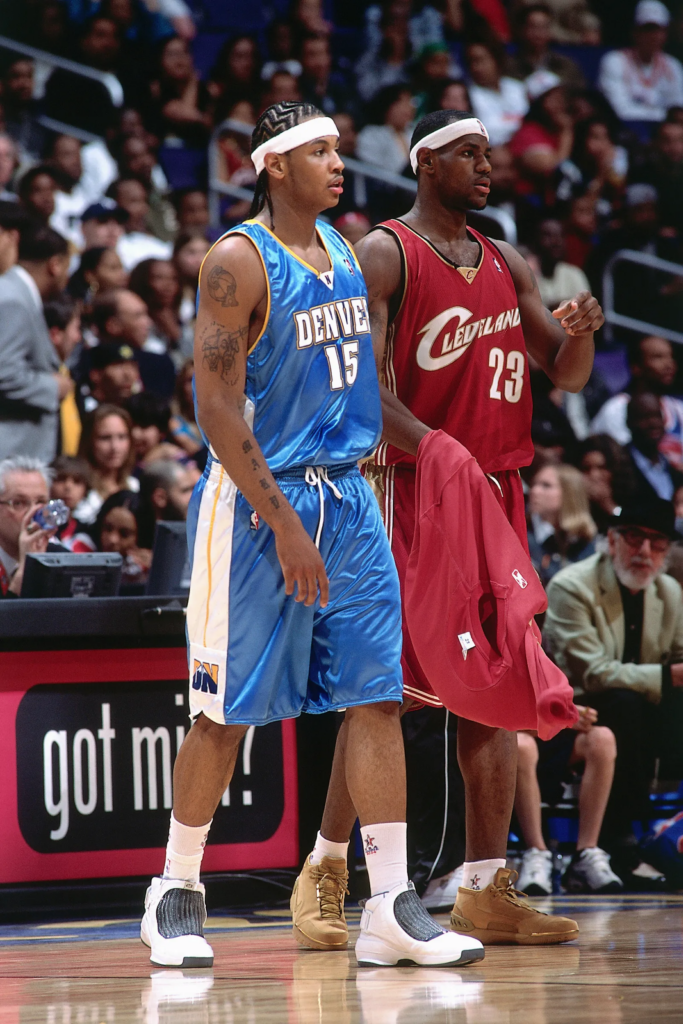
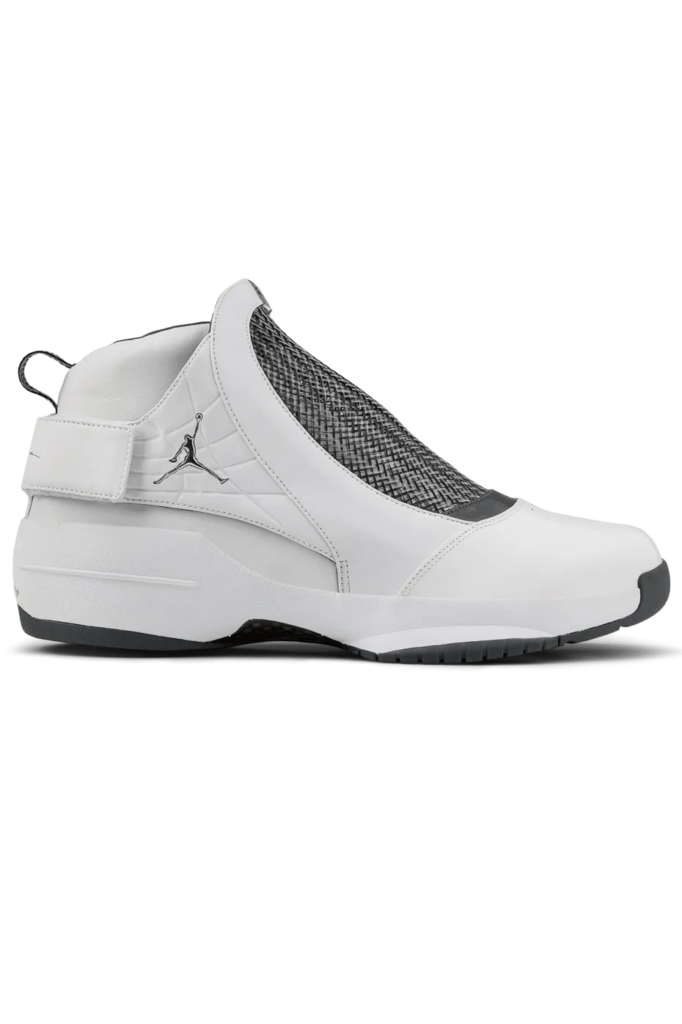
Designed by Tate Kuerbis, the Air Jordan XIX was inspired by the deadly black mamba snake, a symbol of speed, agility, and stealth. This influence is reflected in the shoe’s unique design elements, such as the innovative Tech Flex upper, which provides a lightweight, breathable, and supportive fit. The Tech Flex material, resembling the skin of a snake, gives the XIX its distinctive look while ensuring optimal performance.
The Air Jordan XIX features a full-length Zoom Air unit for responsive cushioning and a carbon fiber shank plate for enhanced stability and support. The shoe’s low-profile design and flexible upper allow for natural movement and agility, making it ideal for quick, explosive play. The XIX also introduced a new lacing system, the Velcro heel strap, which ensured a secure fit and added a futuristic touch to the sneaker’s overall aesthetic.
Michael Jordan, having retired for the third and final time, did not wear the XIX on the court. However, the shoe carried forward his legacy of innovation and excellence. The Air Jordan XIX was marketed with the tagline “The lightest and most supportive Air Jordan ever,” emphasizing its blend of advanced technology and superior performance.
Culturally, the Air Jordan XIX has left a lasting impression. Its design and technological advancements were well ahead of its time, influencing future sneaker designs and setting a new standard for performance footwear. The various colorways, including the “White/Chrome,” “Black/Red,” and “Flint Grey,” have been celebrated by sneaker enthusiasts for their bold and stylish looks.
19. Air Jordan X
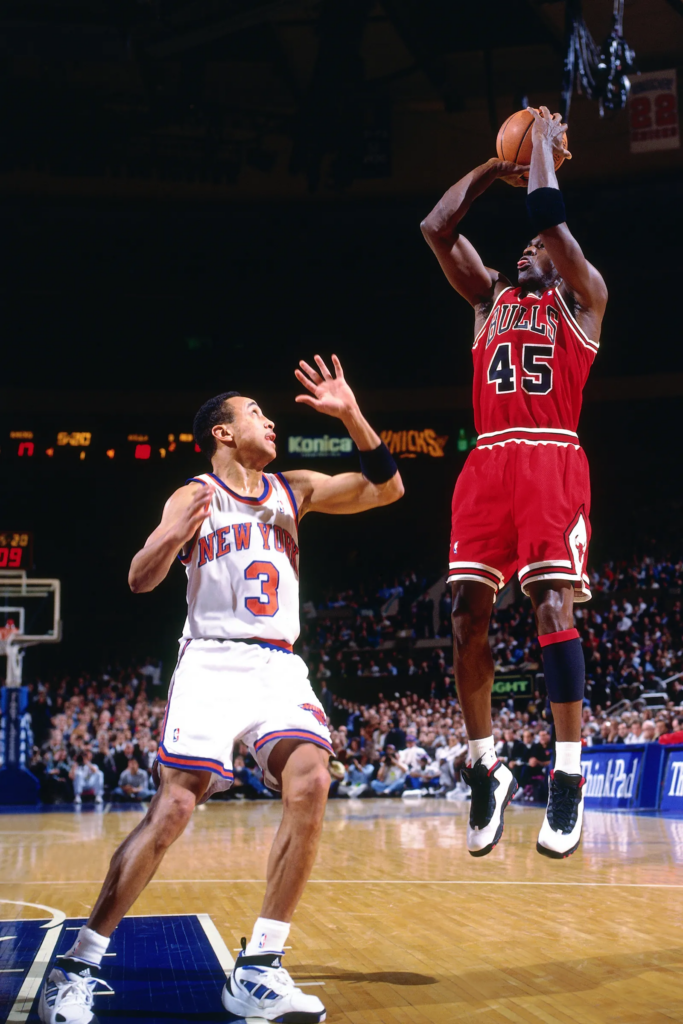
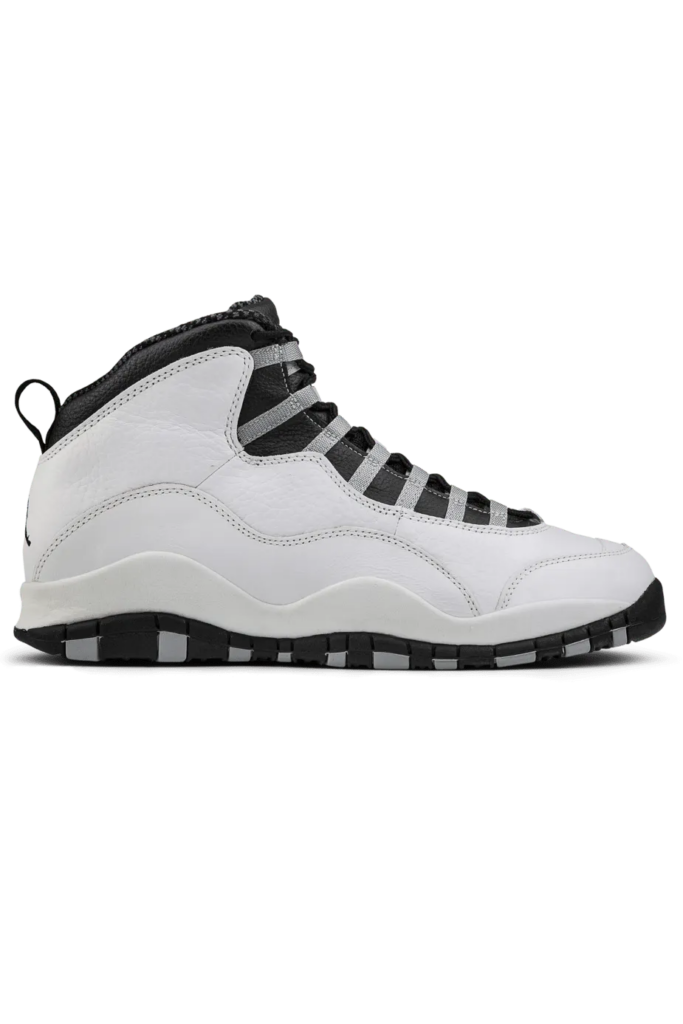
Designed by Tinker Hatfield, the Air Jordan X was crafted during a pivotal moment in MJ’s career—his first retirement from basketball. The shoe pays homage to his illustrious career with an outsole that features a list of his early accomplishments, a unique detail that makes the X a historical artifact as much as a piece of footwear. This “achievement” outsole highlights milestones such as Rookie of the Year, Scoring Titles, and Championship victories, making every step a reminder of Jordan’s dominance on the court.
The Air Jordan X features a clean, minimalist design, which contrasts sharply with the bold designs of earlier models. The upper is crafted from premium leather, offering durability and a sleek look. The use of elastic bands instead of traditional laces enhances the snug fit and ease of wear, while the padded collar and tongue provide additional comfort.
Performance-wise, the Jordan X introduced a lightweight Phylon midsole and a full-length Air-Sole unit, ensuring responsive cushioning and support. The shoe’s rubber outsole, with its distinct achievement pattern, also provided excellent traction and flexibility, making it suitable for both on-court performance and everyday wear.
Culturally, the Air Jordan X has made a significant impact. It was the shoe that Jordan wore during his first return to the NBA in 1995, most famously in the “Double Nickel” game where he scored 55 points against the New York Knicks. This comeback moment added to the shoe’s legendary status, making it a symbol of resilience and greatness.
20. Air Jordan XX
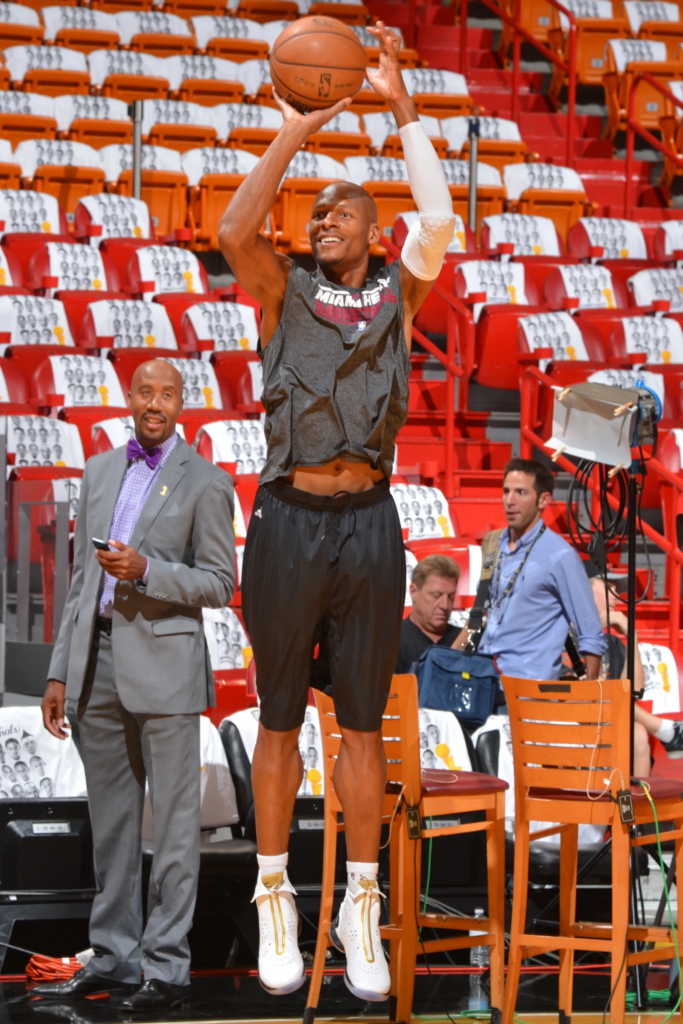

Designed by Tinker Hatfield, the Air Jordan XX8 introduced a slew of new features that set it apart from its predecessors. The most striking of these was the high, shrouded upper, which gave the shoe a sleek, futuristic look while providing added support and protection. This zip-up shroud, when fully extended, covered the entire ankle and lower leg, offering a unique silhouette that was both functional and visually striking.
Beneath this innovative exterior, the XX8 was packed with cutting-edge technology. The shoe featured the revolutionary Flight Plate, a Pebax moderator plate designed to maximize the responsiveness of the Zoom Air cushioning. This system provided exceptional energy return and impact protection, making the XX8 one of the most advanced basketball sneakers in terms of performance.
The XX8 also introduced the Jordan Brand’s proprietary “Strap System,” which used a series of straps inside the shroud to provide a customizable fit, ensuring that the shoe could adapt to the specific needs of each player. This focus on personalized performance helped solidify the XX8’s reputation as a game-changer on the court.
Michael Jordan himself praised the XX8 for its innovation and performance, and it quickly became a favorite among professional players. The shoe was worn by numerous NBA stars, further cementing its status as a top-tier performance sneaker. Its release also marked a return to the signature Air Jordan numbering system, emphasizing its importance within the brand’s storied history.

